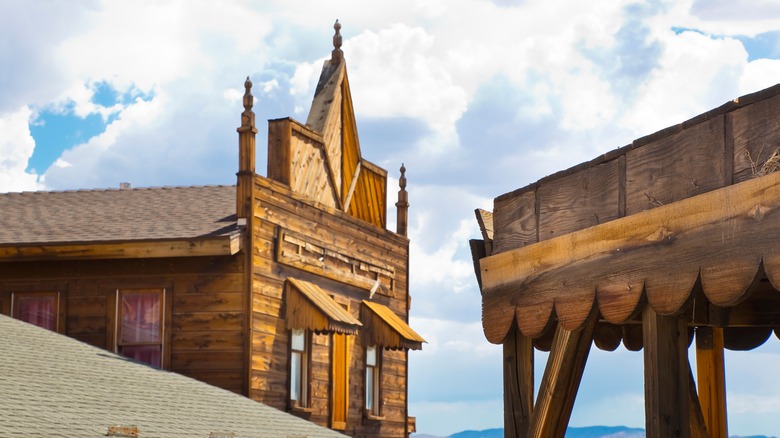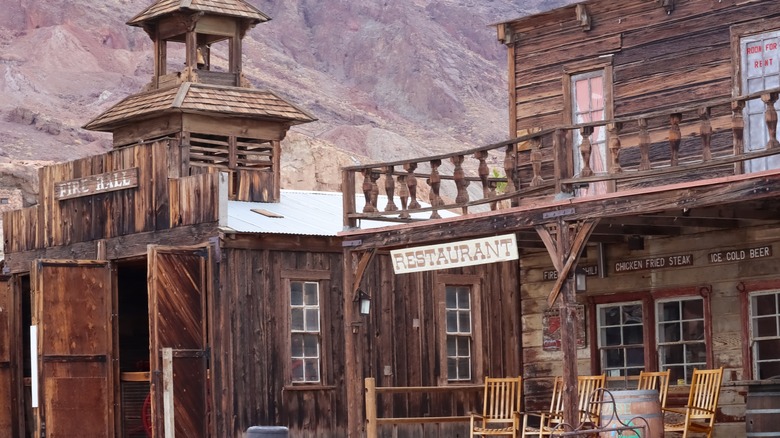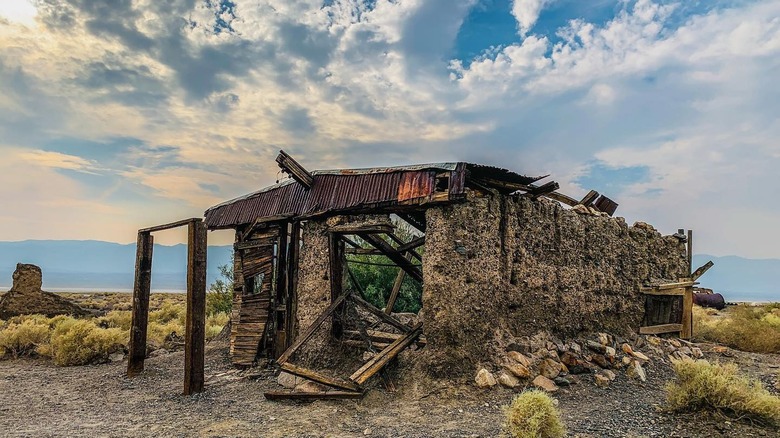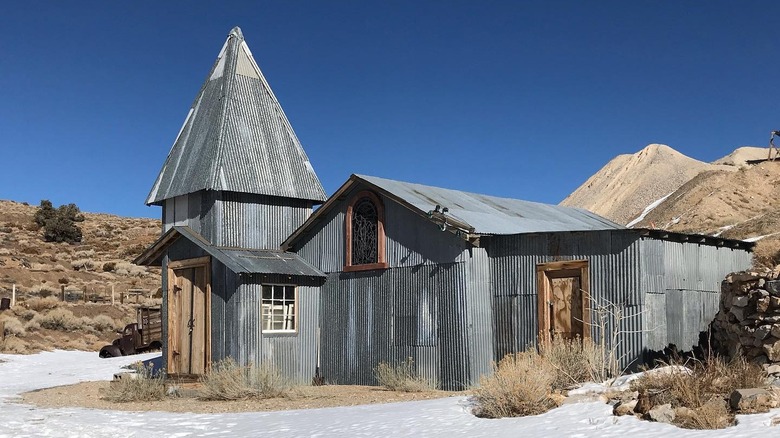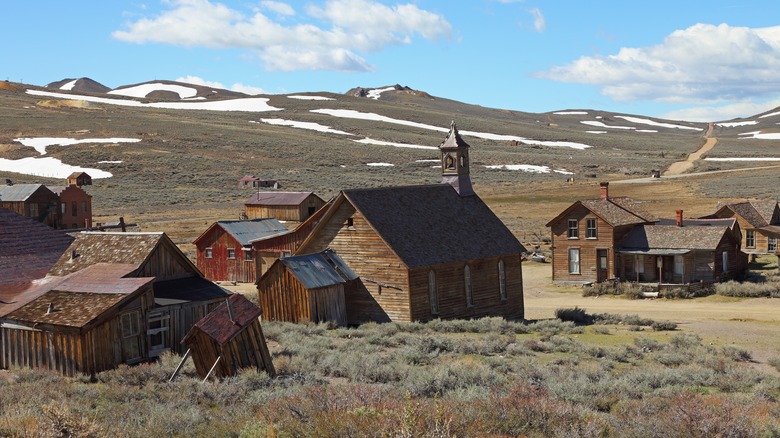Explore The Best California Ghost Towns On This Scenic Road Trip Route
California has such a wealth of modern history that it is sometimes easy to forget it is a relatively new part of the United States, becoming the 31st state on September 9, 1850. Just two years earlier, the discovery of gold by a carpenter named James W. Marshall set off a wild dash for riches that would make California the last frontier of the Old West. Around 300,000 hopefuls headed from all over the world took part in the Gold Rush, setting up mining camps and hard-scrabble settlements and significantly altering the demographics of the new state. Some got extremely rich from their endeavors, and plenty more didn't, but this period of opportunism contributed to California's future as one of the most populous and wealthy states in the nation. As some boomtowns sprang up overnight and faded into the dust almost as quickly, prospectors left behind ghost towns: Over 300 are dotted around the Californian landscape.
Picking the best ghost towns is largely subjective. Some visitors like the theme park experience with gunfights and attractions, while others prefer more desolate outposts left in a state of eloquent ruin. We have put together a scenic route that gives you both extremes; a 500-mile journey through some of the most beautiful, remote, and harsh landscapes in California. Here, a world away from celebrity-spotting in Los Angeles or sipping your way through Napa Valley's wine country, you can really get a sense of what life was like for the intrepid adventurers of the Gold Rush era.
Calico
Our road trip begins with Calico, an eerie California ghost town that is also one of the most popular in the Golden State. It is a leisurely three-hour drive from downtown Los Angeles, and the surroundings couldn't be more different. Located in the harsh environment of the Mojave Desert, it is also a reminder that while the Gold Rush is most famous for its namesake shiny stuff, silver was also a lucrative proposition. Calico was founded in 1881 when prospectors stumbled upon one of California's richest veins of silver in the Calico Mountains. The town became a hotspot as around 500 mines popped up in the area, extracting around $20 million in precious ore over the next decade.
It couldn't last forever, and the silver faulted in the mid-1890s, leaving Calico in a state of decline. The town started a new life as a tourist attraction in the 1950s when Walter Knott bought it and restored many of the original buildings to their original state. Nowadays, Calico is one of the most well-maintained and welcoming ghost towns in California. Indeed, those seeking something more atmospheric might find it a little too much like a theme park, but the town's wealth of attractions and amenities makes for a great day out. Explore the mines, take a steam train ride, join a spooky ghost tour, or check out the mystery shack — Calico has plenty of fun for the whole family, plus some typically Western-themed restaurants.
Ballarat
Two-and-a-half hours north of the relatively bright lights of Calico is Ballarat, a far more remote ghost town. Straddling a crossroads on the edge of Death Valley National Park, the isolated settlement started life in 1897 as a supply point for miners working in the Panamint Mountain Range. Conditions were so harsh that even food and water needed to be shipped in. Nevertheless, Ballarat boasted around 500 residents at its peak, although many were soon discouraged by the extreme temperatures and barren environment. Even so, Ballarat was never completely abandoned. A couple of old prospectors lived there for decades, and Charles Manson and his followers lived in the nearby Barker Ranch until their arrest in 1969.
Nowadays, Ballarat is still home to a few hardy souls, including the owner of the general store that doubles as a small museum. There isn't a huge amount to see, which is also part of the attraction. A few crumbling buildings are the only real clue that there was ever a thriving town here, and a rusty abandoned truck left by the Mansons is a popular photo opportunity. While you're passing through, check out the lonely cemetery. It looks like something from a Sergio Leone Western, and it is the final resting place of Seldom Seen Slim, a prospector who lived in Ballarat until he passed away in 1968.
Cerro Gordo
Continuing north through Death Valley from Ballarat for another few hours, a rugged dirt track off Highway 136 leads you 4 miles into the hills to Cerro Gordo, another former silver town. "Fat Hill" (in Spanish) sprang up in 1865 after a substantial amount of silver ore was discovered in the surrounding area, growing into a prosperous settlement of around 4,000 people at its peak. The Cerro Gordo mines were the largest source of silver and lead in the United States, but the remote location meant it was a proper Wild West kind of place, notorious for gunfights and lawlessness — you can still see bullet holes in the walls of the saloon. Cerro Gordo's heyday ended when a catastrophic fire destroyed much of the silver mining infrastructure in 1877, a disaster mirrored in 2020 when an electrical fire raged through the town once again and hampered attempts to turn it into a tourist attraction.
Nowadays, Cerro Gordo is privately owned by two friends whose passion project is restoring the town once again. One of them, entrepreneur and influencer Brent Underwood, has lived by himself in the town for over four years, overseeing the renovation of structures such as the hotel, which received a new roof in September 2024. Even with the setbacks, Cerro Gordo is still a very well-preserved ghost town. Just bear in mind that it is privately owned, and you should contact Underwood before making a visit.
Bodie
The last stop on our ghost town tour comes after the longest drive of the trip. A further three-and-a-half hours north of Cerro Gordo is Bodie, high up (around 8,300 feet) in the Bodie Hills east of the Sierra Nevadas. It started as a mill and mining camp in 1859 after a prospector called W.S. Bodey discovered a seam of gold. The settlement flourished over the next few decades, growing to become the third-largest city in California with a population of around 10,000 and all the amenities you'd expect from an Old West boomtown — gambling dens, brothels, and a grand total of 65 saloons. By the 1880s, the gold was drying up, and two devastating fires in 1892 and 1932 destroyed most of the town's buildings before mining stopped for good in 1942.
Today, the town is maintained by California State Parks in a picturesque state of arrested decay. Rather than renovating the buildings, the structures are preserved in their original Gold Rush state. As a result, Bodie is a picture-perfect ghost town that attracts around 200,000 visitors each year, but it feels more authentic than some of the more touristy places like Calico or the family-friendly activities of Goldfield in neighboring Arizona. It will cost you $8 ($5 for children) to wander around the town, but it is well worth it. Just beware Bodie's ghostly reputation, as legend has it that if you remove any items from the town, a terrible curse will follow you.
